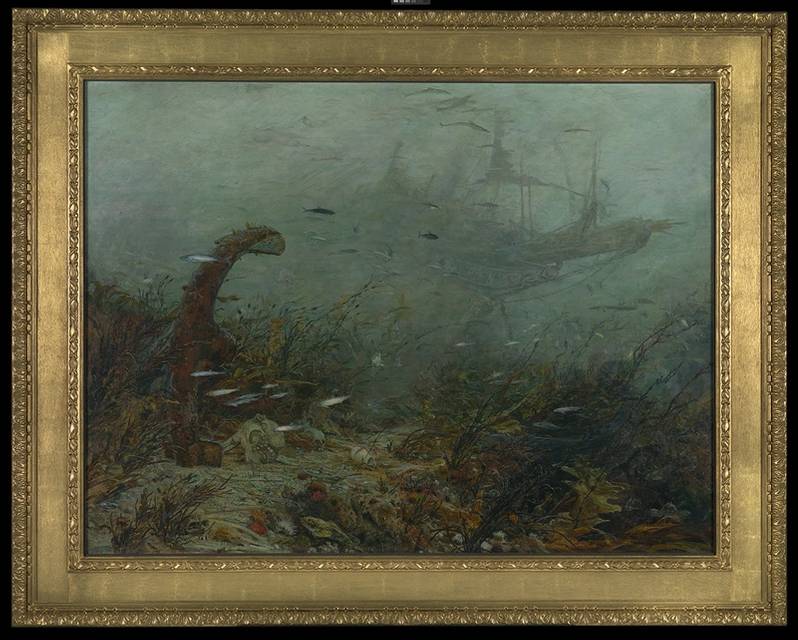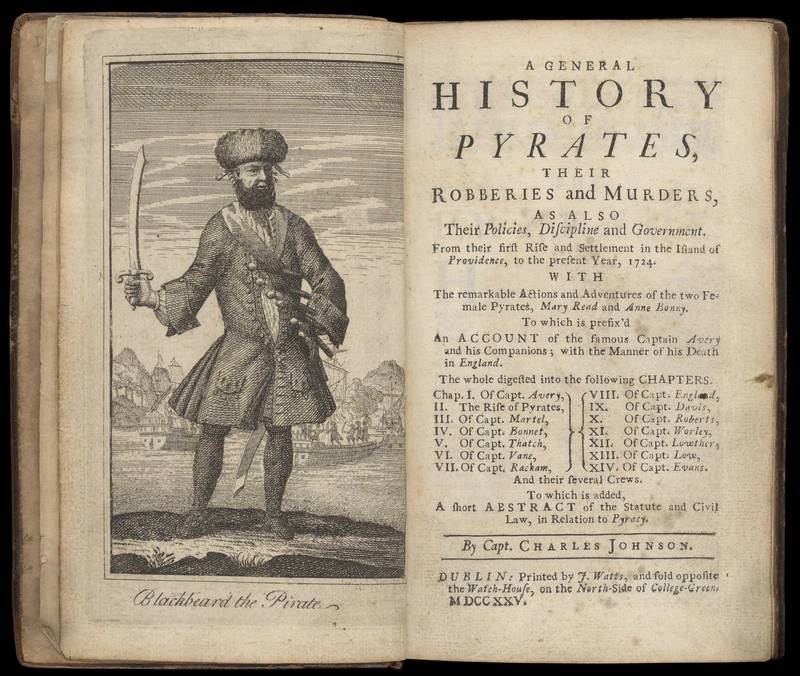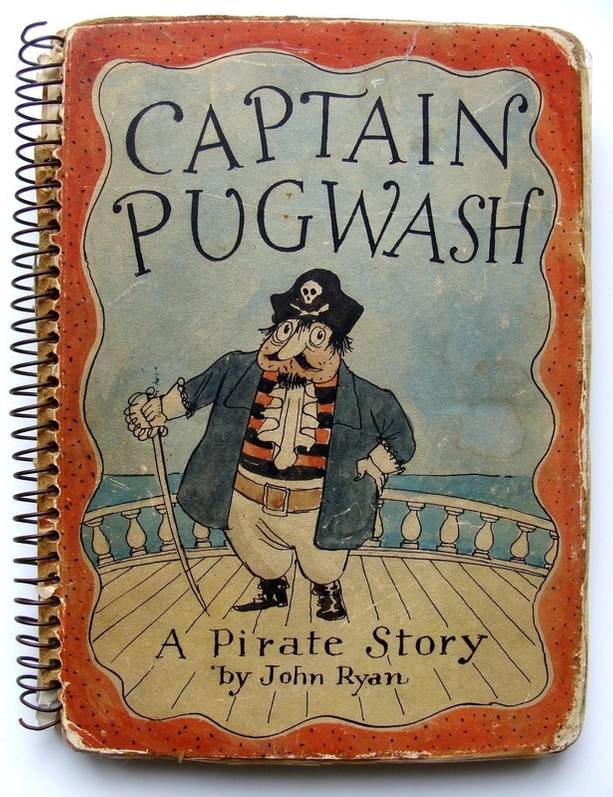'Pirates' Display Debuts @ National Maritime Museum
In March 2025 the major exhibition Pirates will open at the National Maritime Museum (NMM), tracing the changing depictions of pirates throughout the ages and revealing the brutal history often obscured by fiction. While sometimes portrayed as tricksters or scoundrels, pirates are primarily swashbuckling adventurers associated with lush islands, flamboyant dress and buried treasure. Pirates will deconstruct these myths and illuminate the realities of pirate life, including those of the pirates Edward ‘Blackbeard’ Teach, William Kidd, Anne Bonny and Mary Read.
The exhibition will cover piracy across the globe looking at the South China Sea, Indian Ocean and Barbary pirates who operated off the coast of North Africa.
Covering theater, film and fashion the exhibition brings together material from early literature on piracy in the eighteenth century to 1980s fashion. The exhibition will show nearly 200 objects including loans from the National Archives, V&A and BFI.
The first section of the exhibition ‘The Pirate Image’ will explore popular culture and why pirates generate such fascination.
Whether as comical characters, like Captain Pugwash, villains like Captain Hook and Long John Silver or anti-heroes like Captain Jack Sparrow, pirates have captured the imagination for generations. From television to theater, pirates are portrayed in a similar guise, bearded outlaws dressed in seventeenth-century fashion and sporting a tricorn hat. Much of this comes from Treasure Island by Robert Louis Stevenson, the novel that popularized myths such as walking the plank, pet parrots and hiding treasure.
 Wyllie depicts the world of Davy Jones, the mythical figure said to rule over the evil spirits of the deep. Oil on canvas, by William Lionel Wyllie, 1890. © National Maritime Museum, Greenwich, London. Purchased with the assistance of the Society for Nautical Research Macpherson Collection Endowment Fund.
Wyllie depicts the world of Davy Jones, the mythical figure said to rule over the evil spirits of the deep. Oil on canvas, by William Lionel Wyllie, 1890. © National Maritime Museum, Greenwich, London. Purchased with the assistance of the Society for Nautical Research Macpherson Collection Endowment Fund.
The exhibition will show how these tropes have been incorporated into a range of characters. A highlight loan will be a selection of original illustrations from the comedy animation Captain Pugwash. The artist and writer John Ryan (1921–2009) created the character of Captain Horatio Pugwash. He first appeared in cartoon-strips before being featured in a television series using hand-animated figures. These simple but highly distinctive pirates continued to be popular off screen with more than twenty Pugwash books published.
Textile loans include the costume worn by Orlando Bloom in Pirates of the Caribbean: The Curse of the Black Pearl and a Vivienne Westwood ensemble from the 1981 ‘Pirate’ collection. Westwood’s designs, created with Malcom McLaren, were immediately impactful coinciding with the New Romantic movement popular in the early 1980s.
Moving beyond fiction, ‘Real Pirates’ will delve into tales of specific pirates focusing on the so-called ‘golden age’ of piracy from the 1680s to the 1720s. A key text informing this period was A General History of the Pyrates by Captain Charles Johnson which narrates the lives of famous piratical figures. First published in 1724, it was an instant hit. Little is known about Johnson but it is now believed that he is an alias for the newspaper printer Nathaniel Mist (d. 1737). The NMM has one of the world’s most comprehensive collections of the A General History of the Pyrates thanks to Philip Gosse the son of Edmund Gosse, a lifelong friend of Robert Louis Stevenson. Inspired by Stevenson, Philip began to acquire a pirate library, later purchased by the Museum. The exhibition will draw on this collection to show how Johnson’s various editions fed into and responded to popular ideas of pirates across Europe tracking how illustrations of pirates became more elaborate and theatrical to appeal to the public. Though flawed, this book has remained an important historical source.
 A General History of the Pyrates by Captain Charles Johnson, published by J. Watts, 1725 © National Maritime Museum, Greenwich, London.
A General History of the Pyrates by Captain Charles Johnson, published by J. Watts, 1725 © National Maritime Museum, Greenwich, London.
In ‘Global Pirates’ highlight objects include a hanging captured from a junk in the fleet of the Chinese pirate Shap Ng-tsai, who was active in the mid-nineteenth century. Originally thought to be a flag, it is now believed to have been used in a shrine on board the ship dedicated to T'ien Hou, regarded as a calmer of storms and protectoress of marine commerce, fishermen and sailors. Shap Ng-tsai's fleet of 27 junks was destroyed in a joint action by an Anglo-Chinese squadron under Captain John Charles Dalrymple Hay and Major General Hwáng on 20 October 1849. Shap Ng-tsai succeeded in escaping, although his ship and its flag were burned in this action.
Exploring Barbary piracy, the exhibition will focus on the Bombardment of Algiers, 1816, when a combined British Dutch force attacked Algiers in an attempt to resolve the longstanding issue of piracy on the North coast of Africa. Since the seventeenth century European nations had settled into a stalemate with the states of Algiers, Tunis and Tripoli. Various treaties were signed between the British and Barbary Coast states to protect British interests in the region. After the Napoleonic Wars (1803–15), with Europe in relative peace, public opinion turned against the tacit acceptance of Barbary piracy and efforts were made to put an end to the practice.
The British officers at Algiers commissioned a centrepiece from the leading London silversmith Paul Storr, presenting it to their commander, Admiral Pellew. It shows the fortress at Algiers, bristling with tiers of guns, and scenes of the bombardment. The surrounding figures represent British seamen fighting Algerians and releasing Christian captives. The Bombardment resulted in the release of 3,000 Christian captives but came at a cost and was more deadly than the Battle of Trafalgar.
Exhibition information for visitors:
Venue: National Maritime Museum, London
Dates: 29 March 2025 – 04 January 2026
Tickets: Adult (16+) £15; Child (4-15) £7.50; Student £11.25
Website: rmg.co.uk/pirates
Visitor Enquiries: 020 8858 4422 | [email protected]
Twitter: @RMGreenwich
Instagram: @royalmuseumsgreenwich
Facebook /royalmuseumsgreenwich
 John Ryan initially struggled to find a publisher for Captain Pugwash. After 12 rejections, publishers The Bodley Head saw the character's potential. Captain Pugwash: a pirate story finally appeared in 1957. More than 20 other Pugwash books followed. Ink and watercolour on paper with metal binding, by John Ryan, 1953–55
John Ryan initially struggled to find a publisher for Captain Pugwash. After 12 rejections, publishers The Bodley Head saw the character's potential. Captain Pugwash: a pirate story finally appeared in 1957. More than 20 other Pugwash books followed. Ink and watercolour on paper with metal binding, by John Ryan, 1953–55
© Isabel Ryan / Estate of John Ryan



















